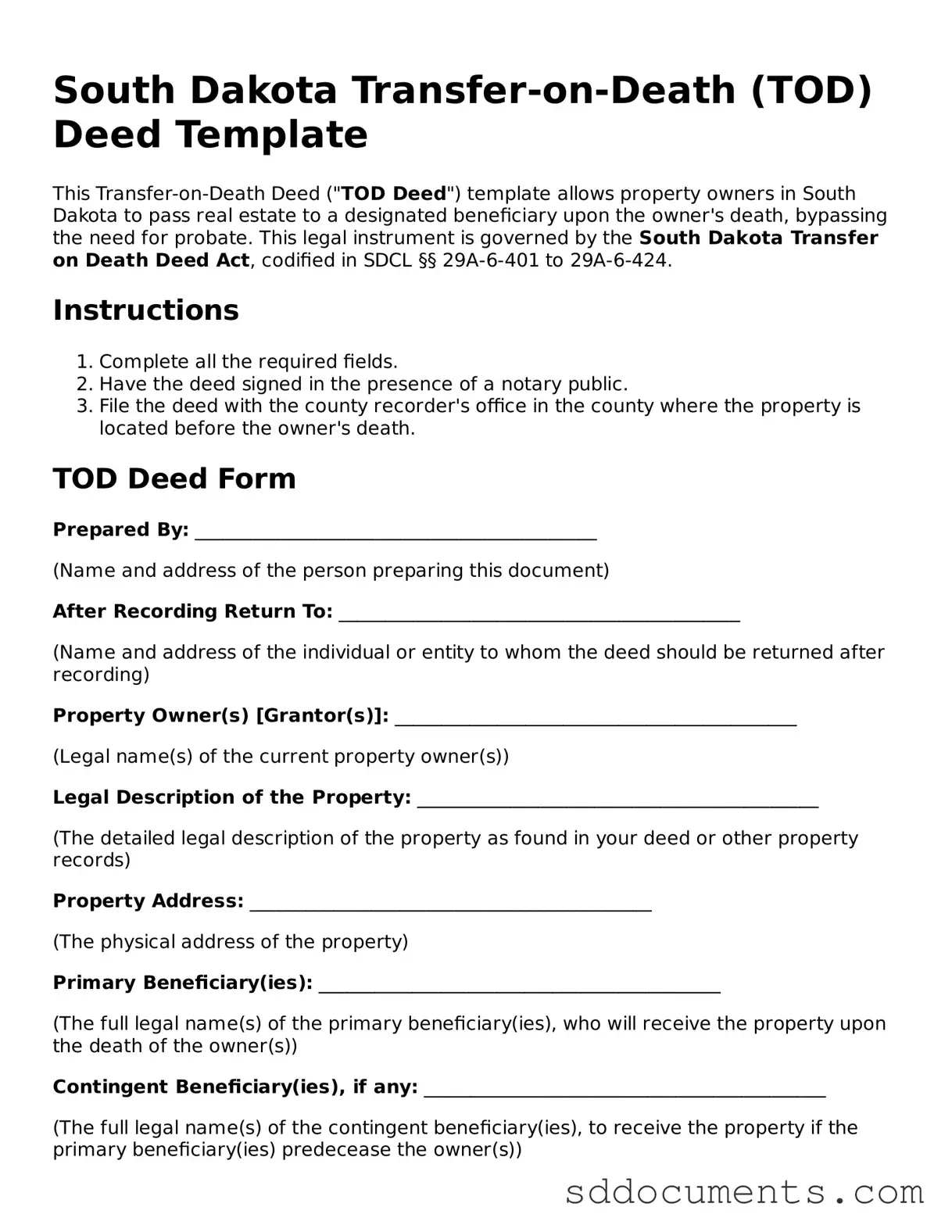Free Transfer-on-Death Deed Template for South Dakota
The South Dakota Transfer-on-Death Deed form allows property owners to transfer their real estate to a designated beneficiary upon their death, without the need for probate. This simple tool can help streamline the transfer process and ensure that your wishes are honored. Ready to take the next step? Fill out the form by clicking the button below.
Customize Document Online
